Click on images to enlarge

infestation (Photo: Sheldon Navie)
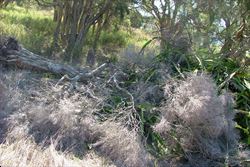
tea tree brought down under the weight of this species (Photo: Sheldon Navie)
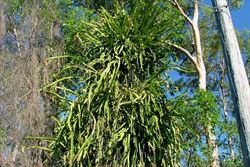
climbing habit (Photo: Sheldon Navie)
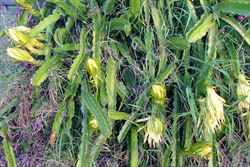
shrubby habit (Photo: Sheldon Navie)
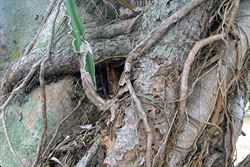
very old stems growing up a tree trunk (Photo: Sheldon Navie)
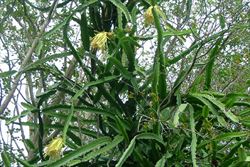
elongated stem segments and flowers (Photo: Sheldon Navie)
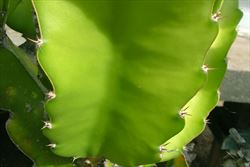
close-up of stem segment with small spines (Photo: Sheldon Navie)
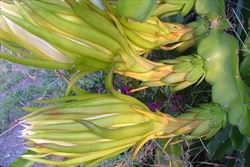
massive flowers from side-on (Photo: Sheldon Navie)

close-up of flower showing large stigma with many spreading lobes and numerous stamens (Photo: Forest and Kim Starr, USGS)
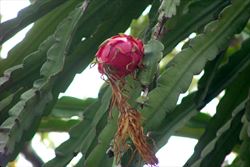
bright red mature fruit (Photo: Sheldon Navie)
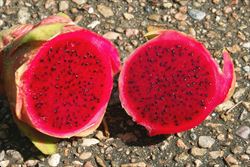
the very similar dragon fruit (Hylocereus polyrhizus) has red instead of white flesh inside the fruit (Photo: Chris Gardiner)
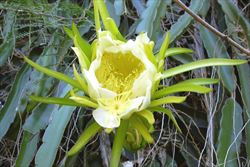
white flower with numerous 'petals' (Photo: Forest and Kim Starr, USGS)
Scientific Name
Hylocereus undatus (Haw.) Britt. & Rose
Synonyms
Cereus undatus Haw.
Family
Cactaceae
Common Names
belle of the night, dragon fruit, dragonfruit, moonlight cactus, night blooming cactus, night blooming cereus, night-blooming cactus, nightblooming cactus, night-blooming cereus, pitahaya, pitaya, queen of the night, queen-of-the-night, red dragon fruit, red pitaya, strawberry pear, white centred pitaya
Origin
This exact origin of this species is obscure, because of its cultivation as a fruit, but it is thought to be native to southern Mexico, Central America and northern South America.
Naturalised Distribution
This species is becoming widely naturalised in eastern Australia. It has been recorded in south-eastern and central Queensland and in the coastal districts of northern New South Wales.
Also naturalised overseas in La Réunion, Hawaii, New Caledonia, Niue and south-eastern USA (i.e. Florida).
Notes
Night-blooming cactus (Hylocereus undatus) is regarded as an environmental weed in Queensland and New South Wales. It has escaped cultivation and is becoming a weed of open woodlands, dry rainforest, riparian areas and coastal vegetation in the warmer parts of eastern Australia. It is usually found growing on trees (i.e. as a climber or epiphyte) and can even climb up into the canopy of very tall trees. Night-blooming cactus (Hylocereus undatus) will form massive colonies and the weight of its succulent stems can eventually bring trees down.
This species appears on local weed lists in Byron Shire, in northern New South Wales, and Redland Shire in south-eastern Queensland. Overseas it is regarded as being invasive in Hawaii, on the island of Niue, and in the Florida Keys in south-eastern USA.

